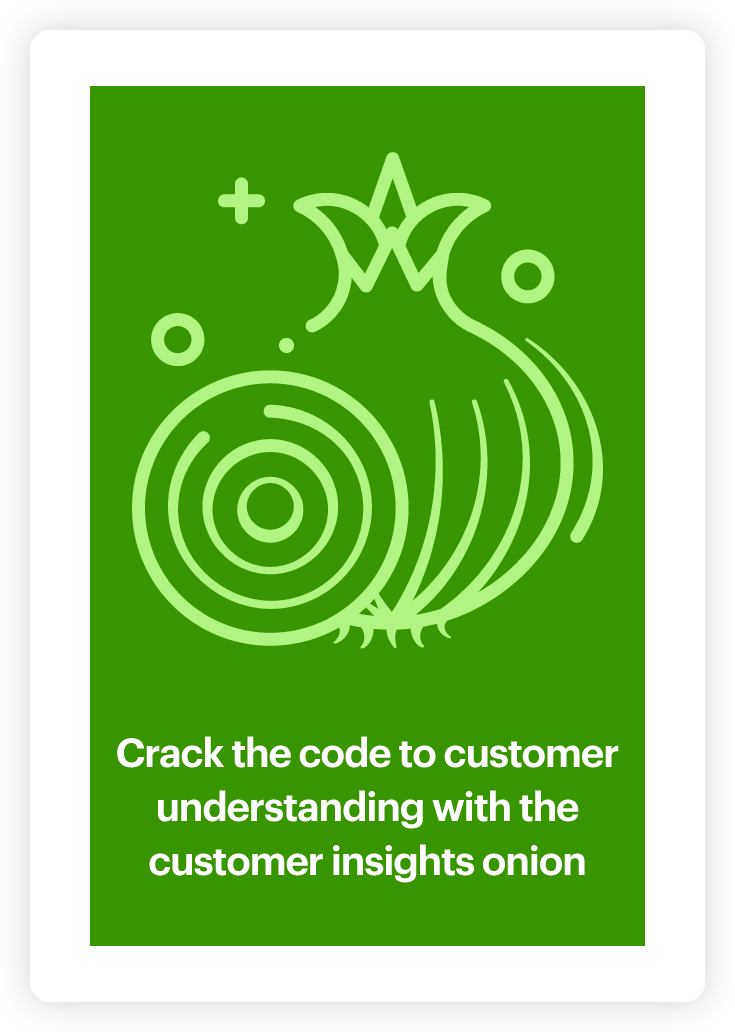The 6 most important features of customer insights platforms

To make truly customer-centric decisions, businesses need to back up their assumptions with customer insights. Luckily, there is a near bottomless pool of customer data available in this day and age. But generating insights from all that data isn’t always as easy as it should be.
Analyzing mountains of customer feedback data manually is not an effective use of time, money and resources. A customer insights tool bridges the gap between your data and high-impact insights – which is why many businesses are realizing that a good customer insights tool is an essential component of their BI toolkits. This industry trend is evidenced by the fact that the global text analytics market, the underlying technology that powers customer insights platforms, was valued at $6.79 billion in 2021 and is expected to reach $14.86 billion by 2026.
To guide you through the process of selecting the right customer insights platform we’ve broken down the six most important features of customer insights tools.
The basics: What is a customer insights platform?
You might be wondering – what do customer analytics tools do exactly? Customer insights tools typically use AI and natural language processing (NLP) to analyze, visualize and report on your customer feedback.
The best part? By letting a customer insights tool tackle the data crunching, you won’t have to spend countless hours manually coding customer feedback (or pay an expensive agency to do it for you). But time and cost-saving aren’t the only benefits of investing in a customer insights platform. They also help mitigate the potential for human error and bias in your analysis.
Ultimately, customer insights platforms provide high-quality insights from your customer feedback and allow your insights team to spend more time building action plans and data storytelling instead of sifting through data.
So what are the six most common features of customer insights platforms?
Generally, there are six key features of customer insights platforms you should familiarize yourself with before choosing the right solution for you. These include word frequency analysis, topical classification, emotion or sentiment analysis, visualization tools, data upload and segmentation and data set comparisons.
Bear in mind that every customer insight tool employs a different methodology and comes with a unique feature set. Understanding the features most important for your objectives will set you up for success.
1) Word frequency analysis
The most basic form of text analysis, word frequency analysis identifies the most commonly used words and phrases in your customer feedback data, which are then visualized in frequency tables or word clouds.

2) Topical classification
Topical text classification is generally used to uncover key themes in your customer feedback data. The best tools will leverage AI to overcome one of the major challenges of topical text classification – the fact that words can take on context-specific meanings. Whereas a traditional ‘hard coded’ approach might misclassify mentions of the word ‘spring’ as a mechanical component instead of a season (or vice versa), AI-powered tools can make more nuanced and reliable judgments about what customers are saying.
3) Emotion or sentiment analysis
The difference between sentiment and emotional analysis is that sentiment analysis classifies text as overall positive, negative or neutral, while emotional text analysis distinguishes between feelings like hope, joy, contentment, anger or frustration. While sentiment analysis might be helpful on a basic level, it doesn’t provide the depth of understanding of your customer’s emotions that emotional analysis does.
4) Visualization tools
A good customer insights tool will also offer data visualizations that allow you to uncover otherwise unnoticed trends in your data and enable you to take corrective or preventative actions.
One such way of visualizing customer feedback is with Relative Insight’s Heartbeat. It allows you to define key topics in customer data and track changes in the prevalence of these themes over time. Enriching existing quant reporting with customer insights generated from your unstructured customer data will help you understand not just what is happening, but more importantly why.

5) Data upload and segmentation
There exist a variety of different ways you can upload data to customer insights platforms. Most commonly, customer data is uploaded as an Excel or .csv file. Alternatively, you can join up data sources directly using an API integration.
After uploading your feedback or transcripts, you can take advantage of the data cleaning and segmentation tools customer insights platforms offer. Common ways to segment feedback data include customer demographics such as location or age, star ratings, satisfaction scores and more.
6) Data set comparisons
A good customer insights tool (like Relative Insight – you can read our reviews!) will also make it easy to compare data sets and the customer segments they represent. By comparing two or more data sets, you can quickly identify differences and similarities between segments that help you deepen your understanding of customers and understand the context in which they engage with your brand.
Comparisons enable you to showcase differences between customer segments (e.g. different geographic markets, high and low-value customers or different generational groups) or spot changes in customer feedback data and behavior over time. This will help you make decisions that prioritize customer experience.
Ready to explore customer insights platforms for your business?
Now that you’ve familiarized yourself with the six most important features of customer insights tools, you should be fully equipped to make a decision about the platform that’s right for you. While there are many tools out there that will provide one or multiple of these features, a great customer insights tool will bring together all of them – so don’t settle for less!
Searching for a customer insights tool that combines all these features? Relative Insight has got you covered! Book a no-commitment discovery call with one of our experts to learn more.
